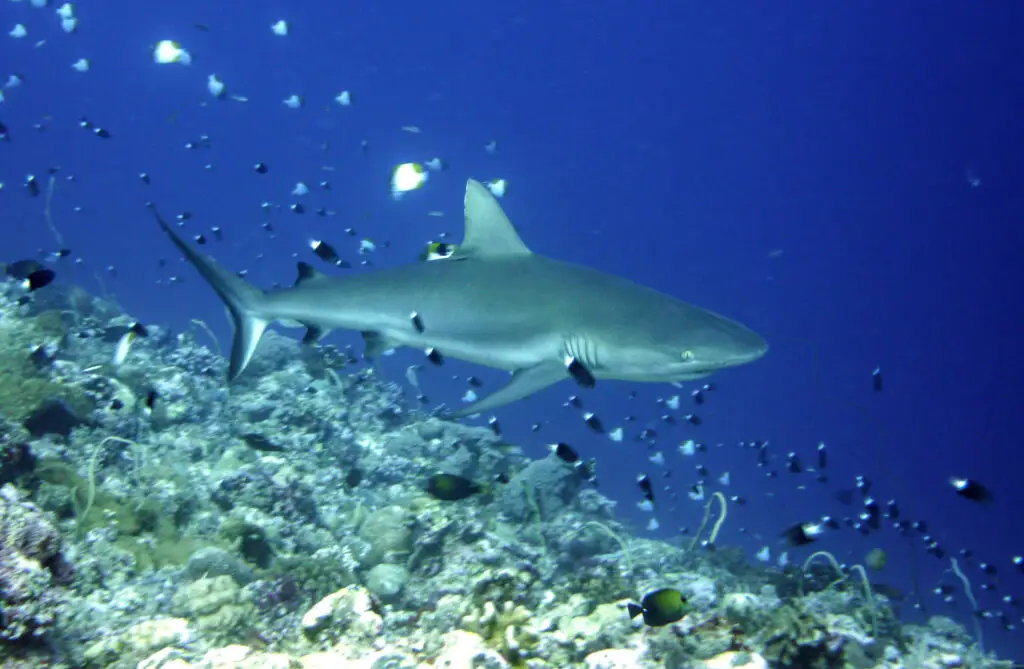Species: Grey Reef, Black-tip Reef, White-tip Reef, Great Hammerhead shark.
Location: Palau. 2010.
As if I hadn’t had my fill of shark diving – straight after the Philippines I headed over to Palau to indulge in some more! Technically speaking this was “out of season” for Palau, lucky for me it was as I am not sure I would have survived ‘in season’. My excitement levels were permanently off the scale because I was undoubtedly in my Nirvana with sharks on tap! Reef sharks cruising by sometimes solo, other times there would be 20 or more hanging around areas with strong currents.
During one particular dive we got treated to a pass by a Great Hammerhead although they have been sighted occasionally, we certainly weren’t expecting it, as my brain processed the image that my (saucer-like) eyes were seeing before me, the liquid world was timeless. If I have played that moment over once, I have played it a million times in my mind’s eye. That is the real beauty of diving, you never know what you may see, and an unexpected treat is a true privilege.

